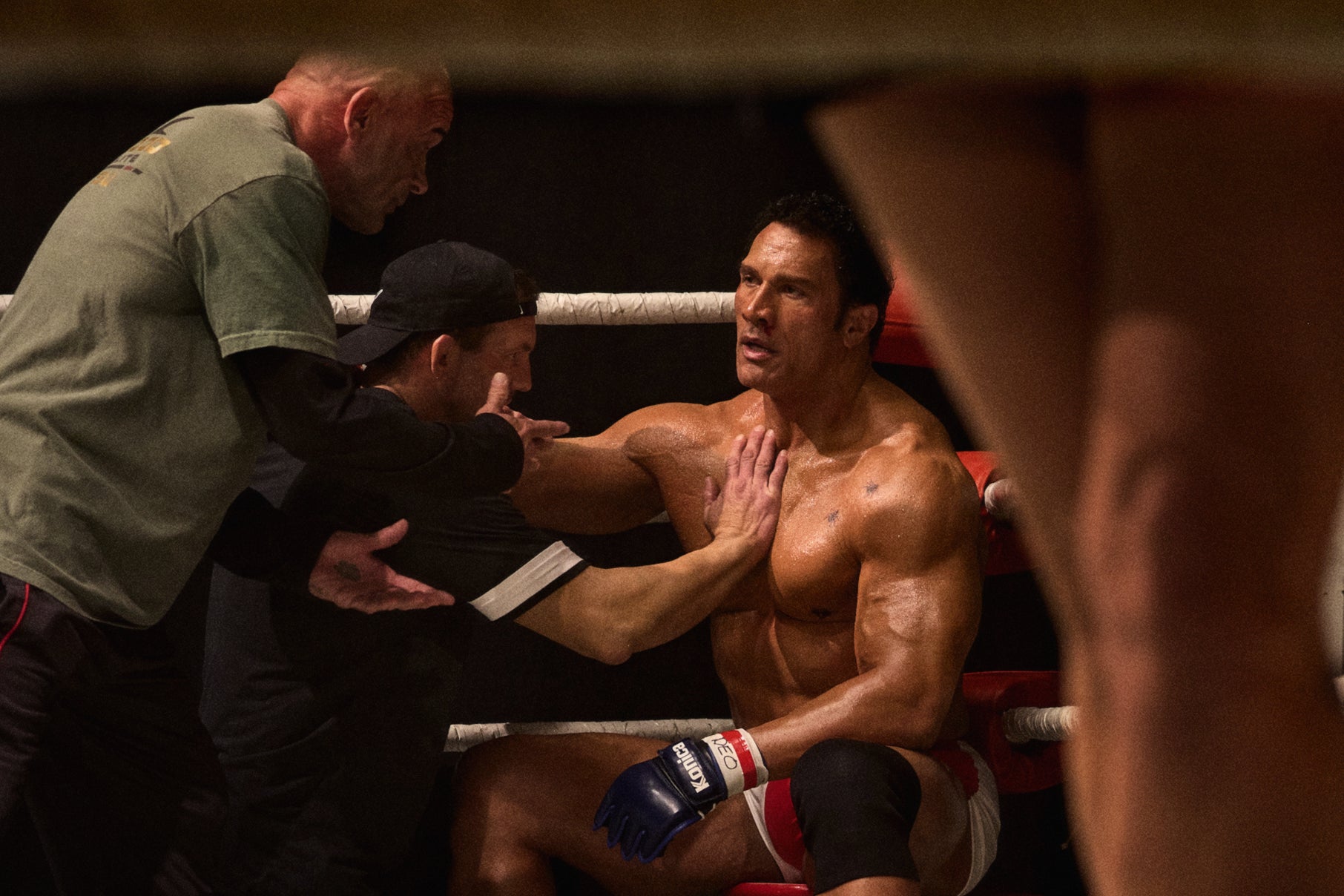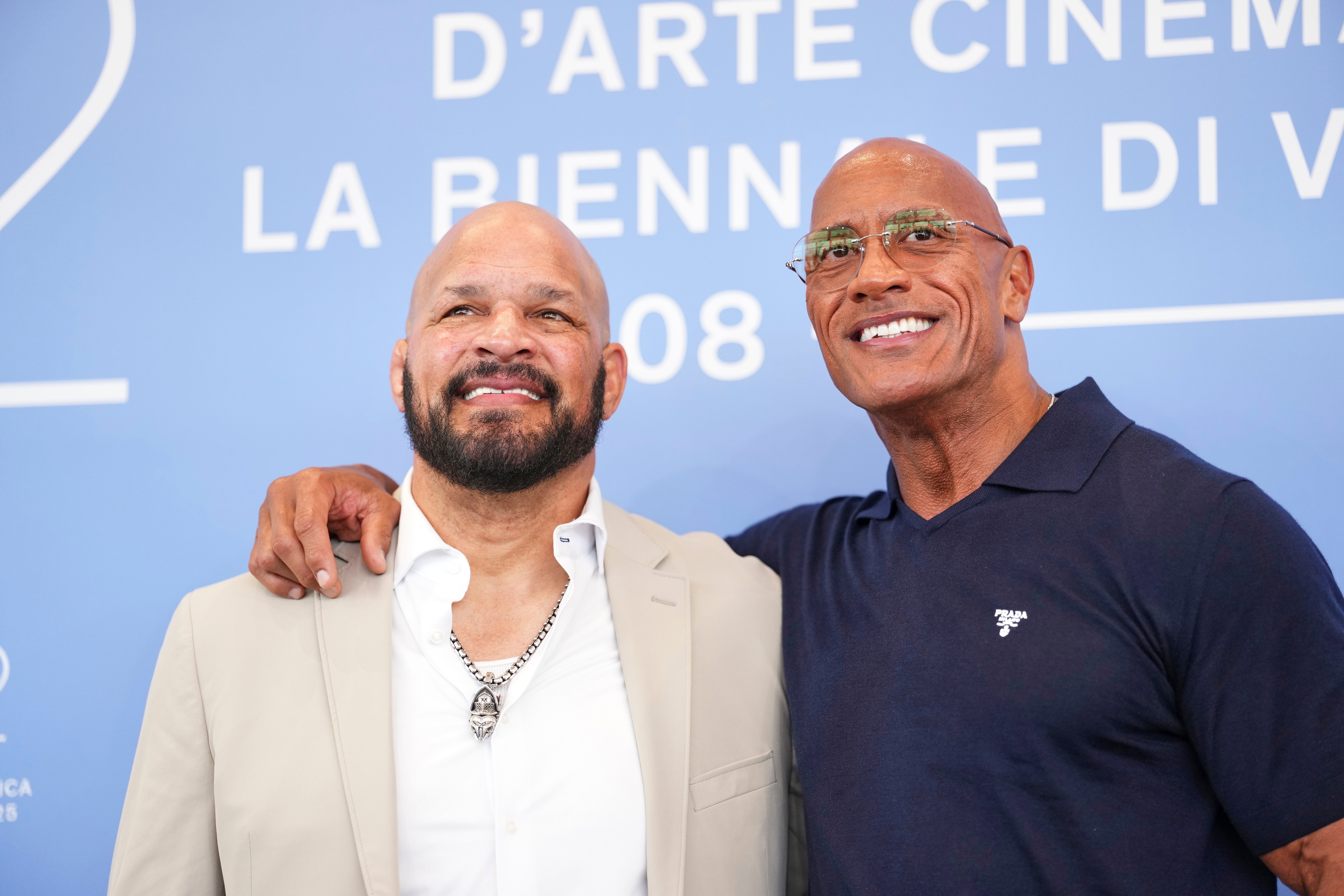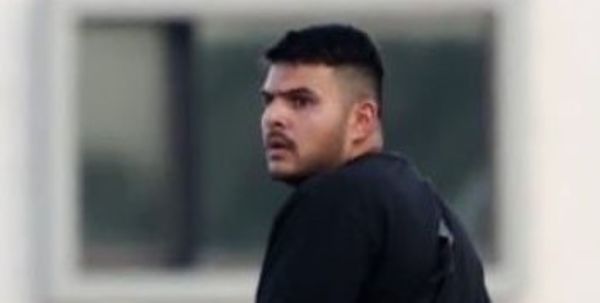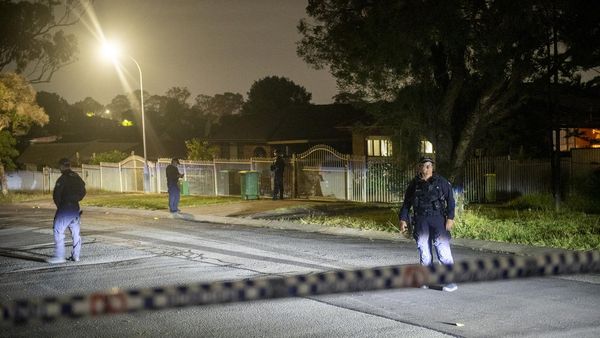The Smashing Machine sees an almost unrecognizable Dwayne “The Rock” Johnson take on the role of UFC legend Mark Kerr.
The 52-year-old wrestling icon wears facial prosthetics to make him more closely resemble Kerr, one of mixed martial arts’ most compelling and tragic figures.
The film, from indie studio A24, is written and directed by Uncut Gems co-director Benny Safdie and is based on John Hyams’s 2002 HBO documentary about the fighter, which was also called The Smashing Machine.
The trailer revealed that the film would stick closely to its source inspiration, even going so far as to recreate one of the most famous scenes from the earlier film. Near the beginning of the documentary, Kerr is in a waiting room ahead of an examination by a physician when he gets into a conversation with an older woman about how he sustained his injuries, which becomes a debate about the violent nature of UFC fights. “Do you hate each other?” she asks. Kerr replies: “Absolutely not.”
The real Mark Kerr, 56, was born in Toledo, Ohio, on December 21, 1968, the youngest of seven from an Irish father and a Puerto Rican mother. Aged 12, his parents shipped him off to live with their eldest, Michael, in Davenport, Iowa, instructing him to keep his younger brother busy with sports.
At the age of 15, while still in high school in Iowa, Kerr began his wrestling career. He later attended Syracuse University in New York, where he became known as a wrestling champion and competed in the Wrestling World Cup and World Championship. He was part of Team Foxcatcher, the wrestling team funded by infamous multimillionaire John du Pont, whose relationship with and murder of Dave Schultz was dramatized in the 2014 film Foxcatcher starring Steve Carell. After narrowly missing out on the chance to compete at the 1996 Olympics, Kerr turned his attention to mixed martial arts (MMA).
His first competitive MMA fight came in Brazil at the World Vale Tudo Championship in January 1997, which he won by defeating three successive opponents. His obliteration of everyone who stood in his way using a combination of elite wrestling and devastating ground-and-pound strikes earned Kerr the nickname “The Smashing Machine.”
Nine of Kerr’s first 11 contests lasted 184 seconds or fewer. “I don’t think Mark liked hurting people, but he was very good at it,” John Hyams, director of The Smashing Machine documentary, would later say. “I think that was part of what his internal struggle was.”
His success in Brazil led him to be invited to compete in the Ultimate Fighting Championship (UFC) in Alabama later that same year. The competition was still in its infancy, having been founded in 1993, and Kerr became one of the tournament’s early stars, with steroid use rife at the time. However, UFC was considered highly controversial, and several US politicians were working to ban it outright. Major cities refused to host UFC fights, and TV coverage dried up.

In search of more regular and lucrative employment, Kerr travelled to Japan to compete in the PRIDE Fighting Championship, where fights regularly pulled in audiences of 50,000 spectators. Kerr estimated he made $1.8 million fighting in Japan, a fortune in MMA at the time. He bought an “unbelievably expensive” house in Santa Monica, California, to go with his home in Phoenix and two cars at each location.
“I needed at least three fights a year to sustain the lifestyle,” Kerr said. “I slowed down to one fight a year and wasn’t trying to get aggressive with renegotiating with Pride. I reached the point of burnout and didn’t feel like fighting as much. The money goes. If it was $100 million, eh, it’s a different story. I would joke with people if Mike Tyson can run through $300 million, I can sure run through $1 million.”
Kerr became one of the stars on the Japanese circuit, but injuries suffered during fights led him to become addicted to painkillers. “Every time a fight came around he was pretty scared,” fellow MMA fighter Mark Coleman said of Kerr’s time in Japan, “He was intimidated by the whole situation and that is probably what led to him using pain killers.”
In The Smashing Machine documentary, graphic footage is shown of Kerr injecting narcotics in a bid to numb his pain. His girlfriend and later wife, Dawn, who will be played in the film adaptation by Emily Blunt, pleaded with him to get clean. The couple had a son, Bryce, in 2005. However, they separated in 2006 and divorced shortly thereafter.

In 1999, Kerr was hospitalized after overdosing on narcotics, but returned to fighting the following year. After the documentary was released in 2002, Kerr continued to fight sporadically for much of the decade. He lost his last five fights, ending with a match in 2009 when he was beaten into unconscious submission in just 25 seconds.
By 2010, Kerr said he was “99.9 percent retired” and had gone back to school with plans to enter pharmaceutical sales. Five years later, he was working at a Toyota dealership.
In a 2019 GoFundMe, he revealed he had been battling peripheral neuropathy for three years. The page stated that his situation had been exacerbated by his previous addiction, as “pain medication is not a option.”
During UFC 316 in June 2025, it was announced that Kerr would be inducted into the UFC Hall of Fame’s “pioneer wing” by Johnson as part of International Fight Week in Las Vegas.
Marking the occasion on Instagram, Johnson wrote: “Mark was one of the greatest fighters on the planet, and during that same time he overdosed twice as he battled his addictions outside of the cage.
“Today, Mark serves as a pillar of hope to everyone out there who’s holding onto faith, and battling their own demons - one day, one hour, one minute at a time... Love you brother and thank you for living your life - as your life, has changed mine.”
Dwayne Johnson cries as new film gets 15-minute standing ovation
Dwayne ‘The Rock’ Johnson shocks fans with slimmed-down physique for serious MMA fighter role
Devil Wears Prada 2 star says new film has been a ‘rude awakening’
Dwayne Johnson opens up about being ‘pigeon-holed’ in Hollywood blockbusters







